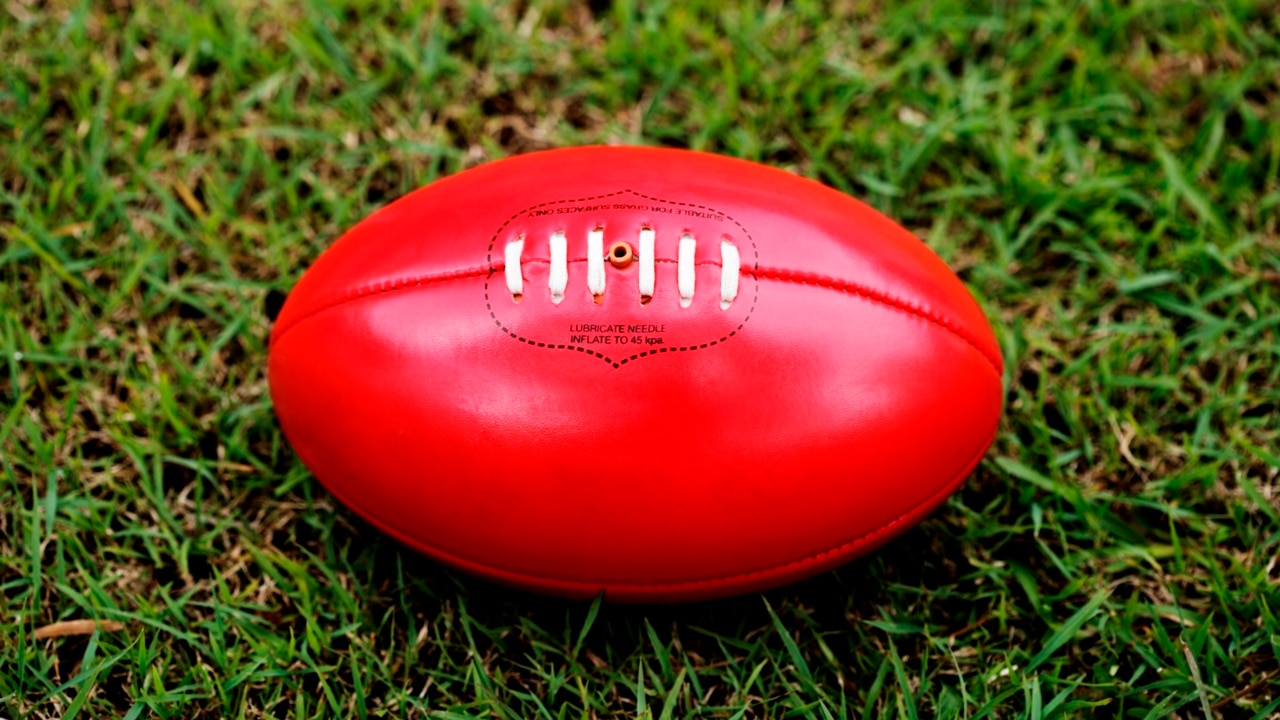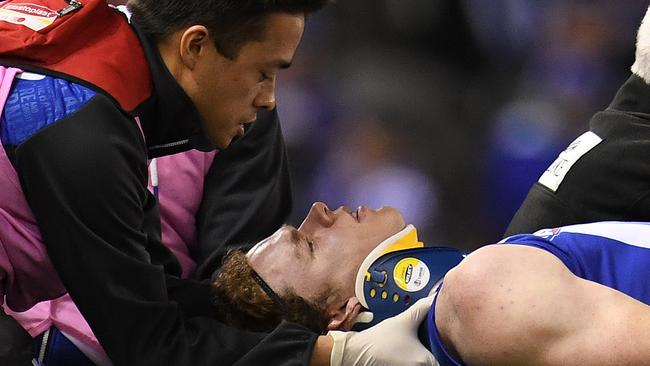New concussion clues as study finds footy players’ brains show links to head knocks
In a world-first study partly funded by the AFL, researchers discover a common pattern in brain connections in the month after a head knock.

VIC News
Don't miss out on the headlines from VIC News. Followed categories will be added to My News.
Melbourne researchers have peeked into the brains of concussed AFL players to uncover signature changes that occur after a head knock — a breakthrough on the path towards an objective diagnostic test for concussion.
In the world-first study, led by the Florey Institute of Neuroscience and Mental Health and partly funded by the AFL, advanced imaging found a common pattern in brain connections in the month after a head knock.
Until now, an MRI of the brain following concussion shows no structural difference to explain the symptoms or damage.
Concussion management largely revolves around assessing general or self-reported symptoms.
Using functional MRI — a type of brain scan that looks at blood flow in the brain after neurons have been firing — Dr Mangor Pedersen said while there was no difference in the brain’s physical structure, the 20 concussed athletes all showed less activity in parts of the brain responsible for executive function, working memory and switching tasks.
“The main challenge has been to get an objective marker of acute concussion to determine when players can go back to playing,” Dr Pedersen said.

“Looking at how the different parts of the brain talk to each other, we can see these three brain areas are affected and these changes match to symptoms we see in concussed players.”
Professor Graeme Jackson, head of the Florey’s imaging and epilepsy group, said the study showed there was a very specific network in the brain affected during concussion.
“It almost redefines what concussion is,” Prof Jackson said.
“We used to think concussion was a diffuse head injury, but we know that’s not true.
“This paper shows there is a very well recognised network, a specialisation in the right hemisphere, that gets affected in concussion.”
Prof Jackson said they were now analysing the brain scans of individual players to uncover the unique changes in their brain function, with the goal of turning their findings into a tool to guide personalised treatment and recovery.
BREAKTHROUGH IN CONCUSSION TREATMENT
Breakthrough in concussion treatmentCLUB TACKLES FOOTY CONCUSSIONS HEAD-ON
WOMEN GREATER RISK OF BRAIN INJURY, AGENT WARNS
“Currently if you have a hamstring injury, what you hear at the end of the game is ‘we’ll see what the scans show’. The scan can show inflammation in the muscle, see what’s not working right, and from there you can work out a therapy,” Prof Jackson said.
“We now have a sophisticated tool, only in the research environment at the moment, where we can see functional brain that is abnormal if you have concussion, and we can see that resolve over time — just like the scan for the quad.”
The findings were published in Journal of Concussion.
Originally published as New concussion clues as study finds footy players’ brains show links to head knocks


